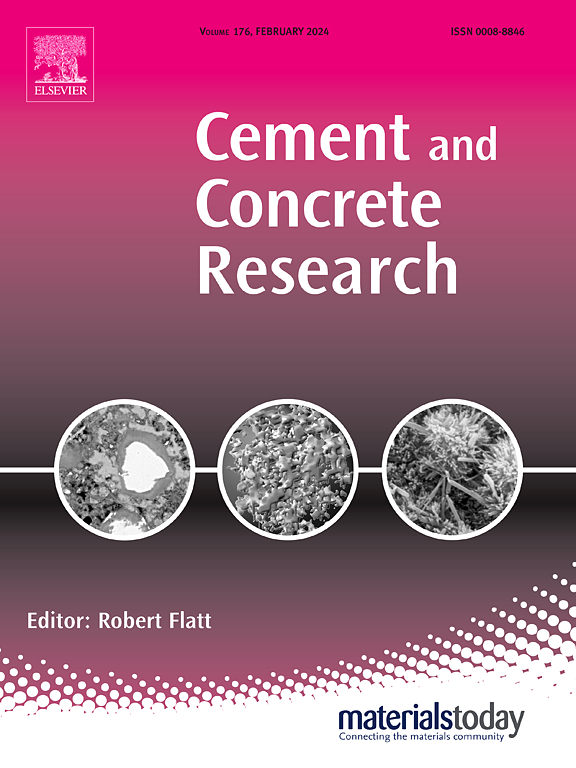孔溶液组成和高效减水剂对偏高岭土悬浮液颗粒间力和流变性的影响
IF 13.1
1区 工程技术
Q1 CONSTRUCTION & BUILDING TECHNOLOGY
引用次数: 0
摘要
本文研究了pH、水相组成和高效减水剂对纯偏高岭土悬浮液中颗粒相互作用的影响。结果表明,当pH值达到11时,偏高岭土颗粒对OH−的吸附增加,从而导致颗粒团聚减少,从而增加了zeta绝对电位,产生了较大的静电斥力。在pH = 11以上,zeta电位略有升高,胶体稳定性保持不变。在pH = 13的Na2SO4或Ca(OH)2溶液中制备的偏高岭土悬浮液没有结块。然而,Ca2+和SO42−同时存在,导致颗粒团聚,并随着Ca2+浓度的增加而增强。在含有Ca2+和SO42−的悬浮液中,Ca2+浓度的升高也导致偏高岭土悬浮液的屈服应力值升高。聚羧酸酯醚(PCE)高效减水剂的加入使偏高岭土颗粒脱团,并降低了屈服应力值,这与颗粒间力模型一致。本文章由计算机程序翻译,如有差异,请以英文原文为准。
Impact of pore solution composition and superplasticizers on the interparticle forces and rheology of metakaolin suspensions
This study focuses on the influence of pH, aqueous phase composition and superplasticizers on the particle interactions in pure metakaolin suspensions. It was found increasing pH up to 11 led to the decrease of the particle agglomeration due to the higher OH− adsorption onto metakaolin particles, which increased the absolute zeta potential and generates higher electrostatic repulsive forces. Above pH = 11, a slight increase in zeta potential was observed and colloidal stability was retained. Metakaolin suspensions prepared in Na2SO4 or Ca(OH)2 at pH = 13 did not agglomerate. However, the simultaneous presence of Ca2+ and SO42−, led to particle agglomeration, which was enhanced as Ca2+ concentration increased. The rise of Ca2+ concentration in suspensions containing Ca2+ and SO42− also induced higher yield stress values in metakaolin suspensions. The addition of polycarboxylate ether (PCE) superplasticizers deagglomerated metakaolin particles and decreased yield stress values in agreement with interparticle force modelling.
求助全文
通过发布文献求助,成功后即可免费获取论文全文。
去求助
来源期刊

Cement and Concrete Research
工程技术-材料科学:综合
CiteScore
20.90
自引率
12.30%
发文量
318
审稿时长
53 days
期刊介绍:
Cement and Concrete Research is dedicated to publishing top-notch research on the materials science and engineering of cement, cement composites, mortars, concrete, and related materials incorporating cement or other mineral binders. The journal prioritizes reporting significant findings in research on the properties and performance of cementitious materials. It also covers novel experimental techniques, the latest analytical and modeling methods, examination and diagnosis of actual cement and concrete structures, and the exploration of potential improvements in materials.
 求助内容:
求助内容: 应助结果提醒方式:
应助结果提醒方式:


